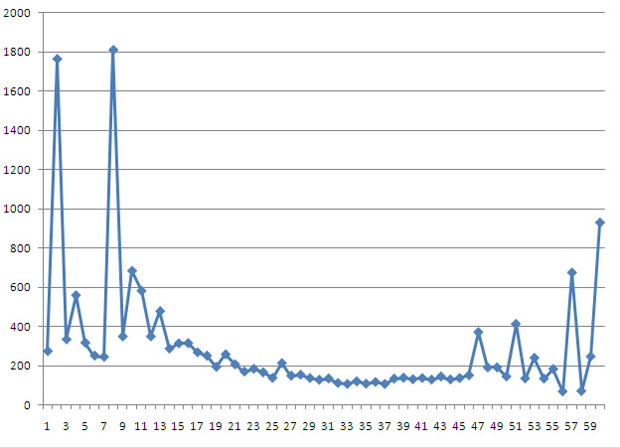Did anti-filter voters put Conroy last?

Prior to the 2010 Federal Election, a campaign opposing the Australian Labor Party's mandatory internet filter policy was held to send Labor a message by putting Senator Stephen Conroy, the minister responsible for the policy, last on their Senate ballot paper when voting below the line. But did it work?
Well, Conroy's returned to the role of minister for Broadband, Communications and the Digital Economy, with the additional responsibility for overseeing the roll-out of the National Broadband Network.
But, thanks to the AEC's Virtual Tally Room website and the publicly available raw data from the election, it is now possible to see exactly how every below-the-line voter in Victoria allocated all 60 of their Senate preferences in 2010.
Developer Gary Pendergast has put the results of a face-off between Victoria's two most controversial senators, Conroy and Family First's Steve Fielding, up on his website with an analysis. I have gone one step further, and used AEC's files and singled out the data on Conroy's vote distribution (see graph below).

This graph shows the distribution of preference votes for Stephen Conroy. (Credit: Josh Taylor/ZDNet Australia)
The graph reveals that of the small minority of Victorians who voted below the line, the vast majority either voted Labor or Greens first. The sharp spike at number two corresponds with where Conroy appeared on the ALP ticket on the ballot paper, while the spike at number eight corresponds with voters picking the six Greens candidates and then Labor.
Those who voted the entire Labor ticket last likely put Conroy at number 57, explaining the spike there, while the data shows that around 5.2 per cent of voters put Conroy at the 60th place on their senate ballot. It's a noticeable spike, but nowhere near enough to put the minister's Senate spot in any real danger.
Political blogger Ben Raue noted during the course of the election that it would take upwards of 40 per cent of voters in Victoria to take on this campaign. Perhaps the protest vote will leave those who feel passionate about the policy knowing they have voted with their conscience and vented their spleen?
In any case, Conroy is still keen on continuing with the policy of mandatory internet service provider level internet filtering, even with the guarantee that the legislation won't pass in parliament any time soon if the Coalition and the Greens vote against it.
As Pendergast noted in his blog, this election saw an increase in the number of people voting below the line for the Senate across Australia. Thanks, in part no doubt, to campaigns such as Filter Conroy, and assisted by voting guide websites such as Belowtheline.org.au. It will be interesting to see if this trend continues, thanks to the easy accessibility of voting assistance tools like these. That's even without considering the possibility of online voting.